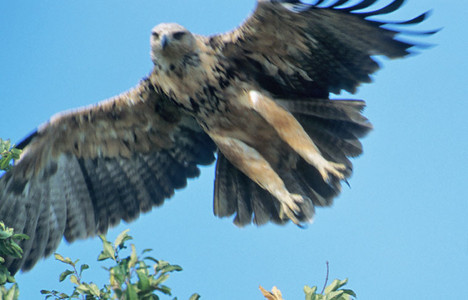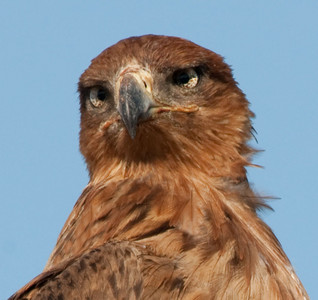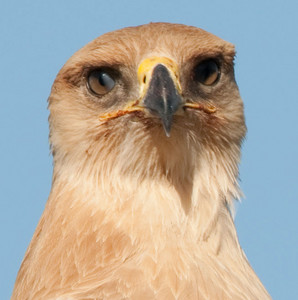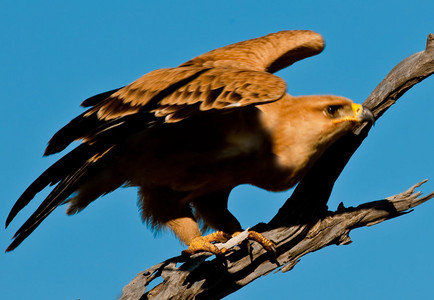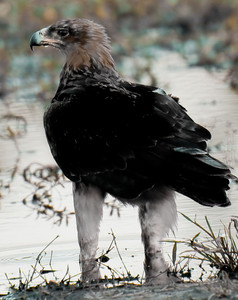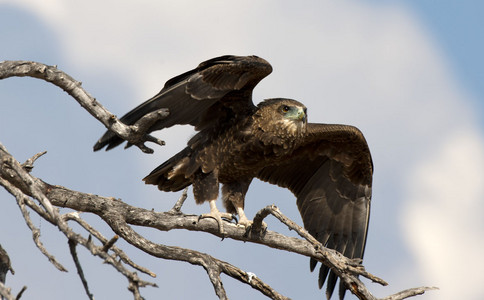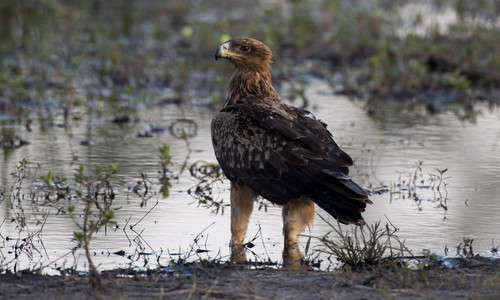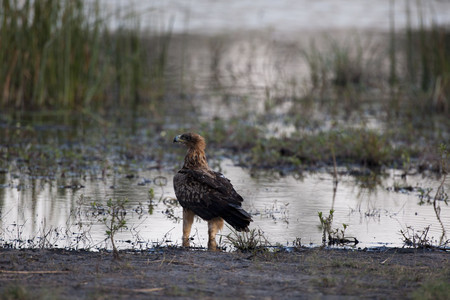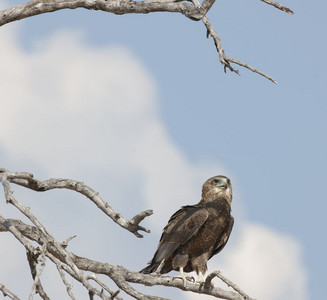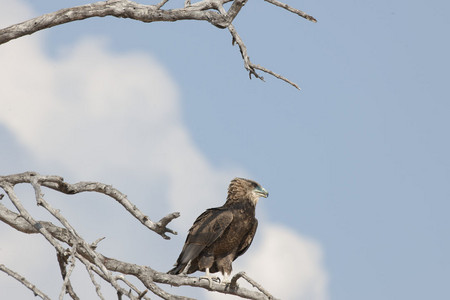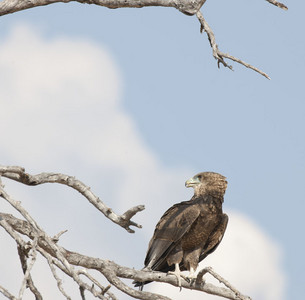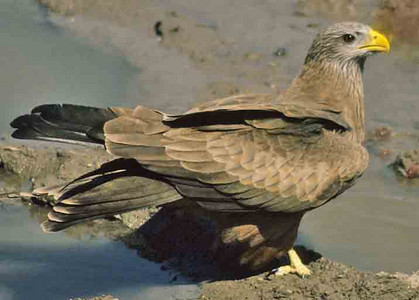
Tawny Eagle--Dark Phase
The Tawny Eagle varies in size, but it can be quite large. The 'dark' phase (shown here) is the most common phase--a medium brown--but it occurs also in a creamy (light, pale) phase. [Big Tom's, Hwange NP, Zimbabwe],
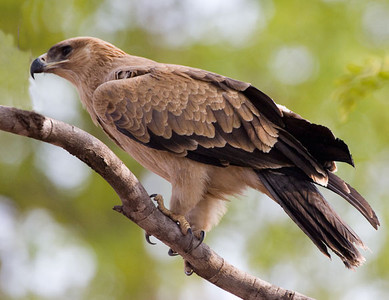
Tawn Eagle On Small Branch
Tawny Eagle with a lighter coat of feathers, i.e., a pale phase. [Serengeti, Tanzania].

Tawny Eagle At Carrion
Triple image: views of a Tawny Eagle in its caracteristic brown coat. This one is picking up some scraps of carrion remaining from some small animal, already too well eaten to identify. [Moremi NP, Botswana].
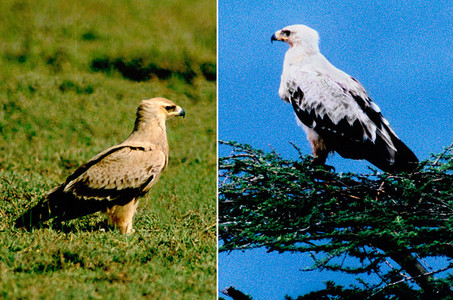
Tawny Eagles
These are two other examples of the Tawny Eagle's plummage coloring. The extensive light brown coloring of the one on the L may be due to its being a not fully adult; however, the one on the R seems more fully developed and an adult 'pale phase' Tawny Eagle. It is not a separate subspecies, but simply due to a spontaneous genetic variance. (Serongeti, Tanzania].
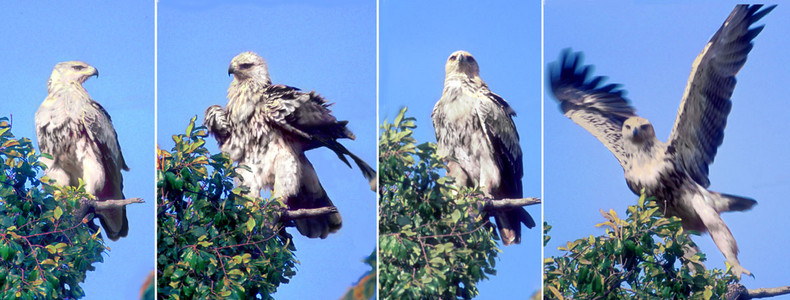
Tawny Eagles
A 4-image image:The light coloration of this juvenile Tawny Eagle is not due to its young age, it will always be a light-colored pale phase Tawny Eagle. [Moremi NP, Botswana].
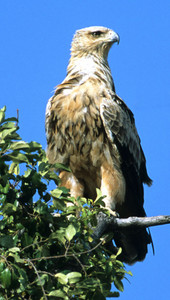
Tawny Eagle Cream Phase
A pale phase Tawny Eagle. Note that it has some feather colorations of both the dark and pale phases. [Hwange NP, Zimbabwe].
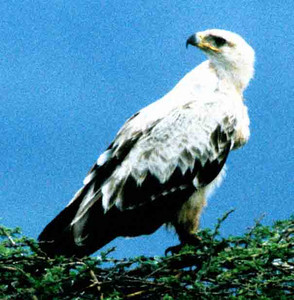
Tawny Eagle
A pale phase Tawny Eagle with an unusal coloration--white over its entire front, upper back, and head, but with black feathers on its sides and tail. [Serengeti, Tanzania].
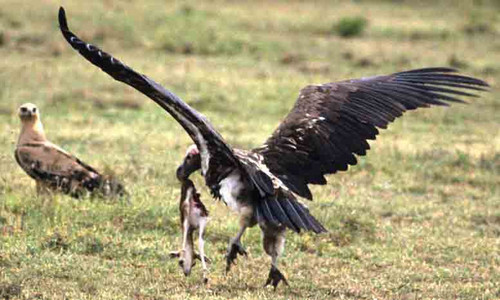
Tawny Eagle vs. Lappetfaced Vulture-1st image
1st image: A Tawny Eagle vs.Lappetfaced Vulture confrontation!. First, the largest African Vulture tries to carry off the dead Thompson's Gazelle newborn, but it's too heavy for the bird to get airborne, and so it drops it. But a Tawny Eagle is there to carry the fawn off. (Please go to next image). [Serengeti, Tanzania].
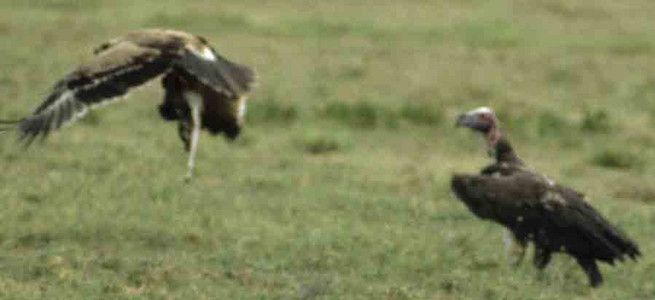
Tawny Eagle vs. Vulture
2nd image:The Tawny eagle now attempts to lift and carry away the dead Thompson's Gazelle faun, but also finds it too heavy. Not surprising, because this species of vulture is a much larger, heavier bird. If it couldn't lift it, the smaller, lighter Tawny couldn't. Also, had the 2 birds not been scared off by our presence, they would have torn the faun apart right there and fought over the pieces.The vulture, being bigger, would probably have won. Please go to (next) image. [Serengeti, Tanzania].
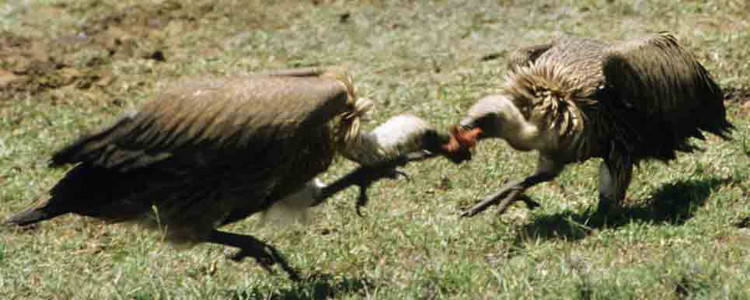
Tawny Eagle vs. Vulture
3rd image: Both the Tawny Eagle and the Lappetfaced having been frightened off by our presence, flew away. Soon, the carcass is found by two Whitebacked Vultures who, while squabbling with each other, proceed to devour the spoils.[Serengeti, Tanzania].
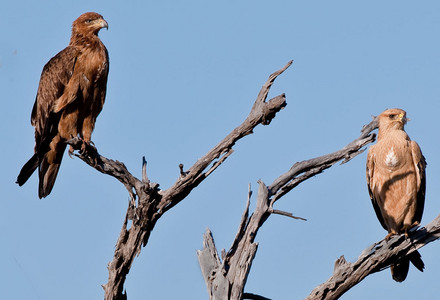
Tawny Eagle
This is a most unusual image because it has two phases of Tawny Eagles together in a dead tree: the one on the left is the 'dark' phase, the one on the right is the 'light or 'pale' phase. ? siblings. The two phases have great variety as the viewer will note in examining the preceding images. These phases are unpredictable. Two light-phase birds could produce 'dark' phase chicks at one mating, and a different coloration at the next mating. [Botswana].
